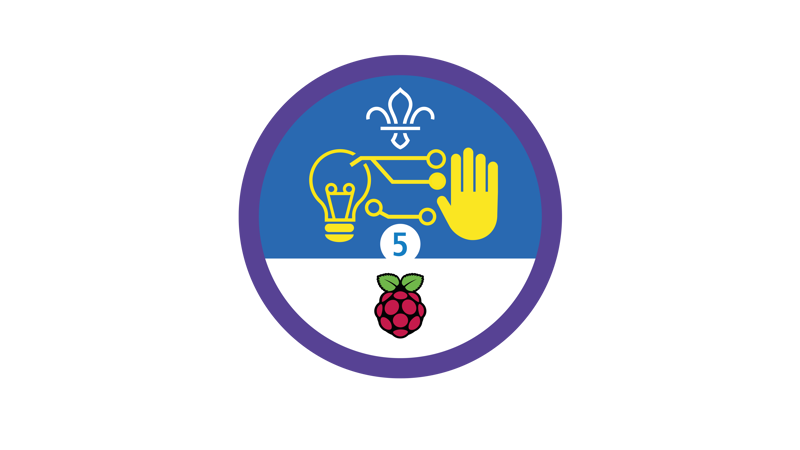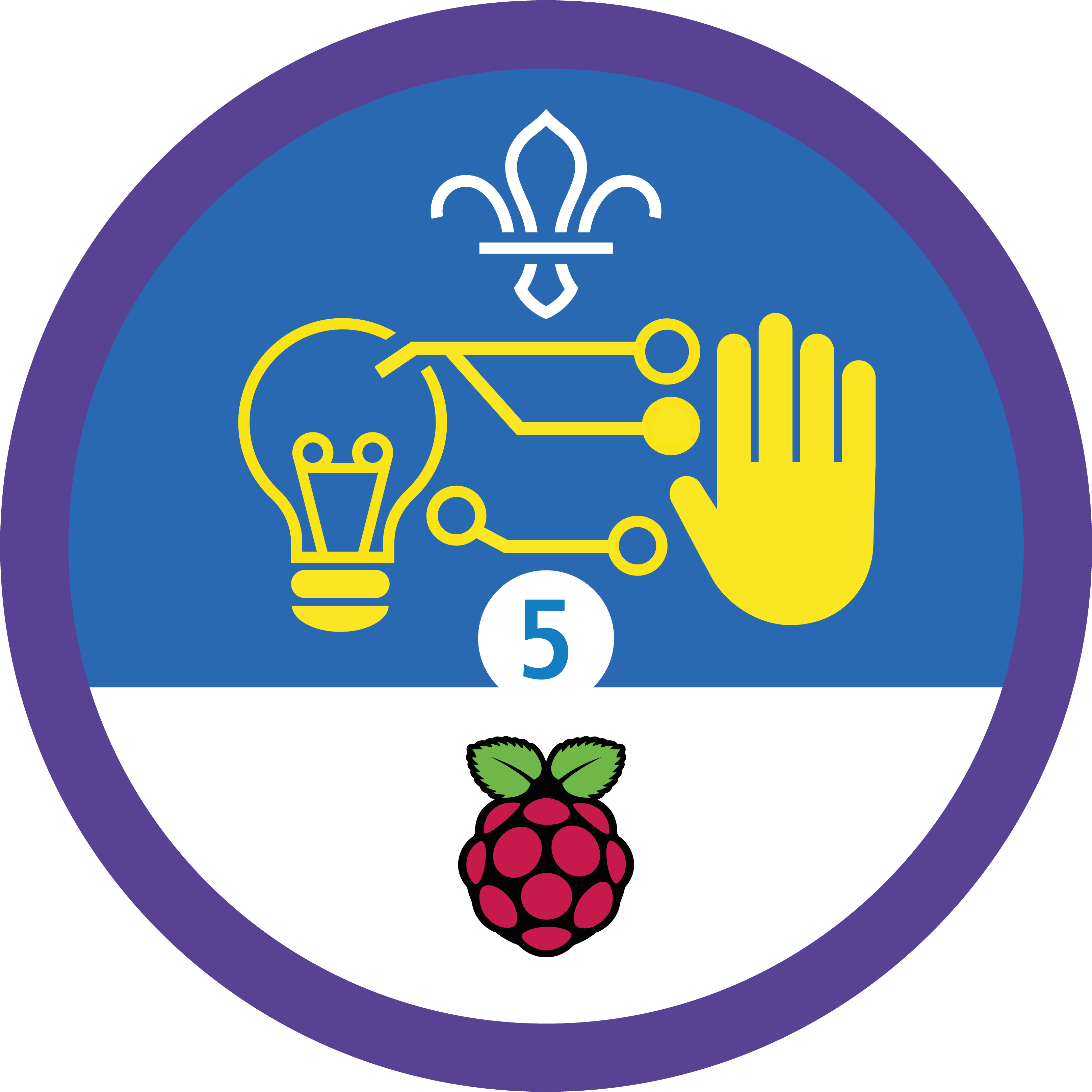
Let’s get real
You’ll need
- Access to a computer
- Access to the internet
- Pens or pencils
- Scrap paper
- Various components or devices (depending on project)
Before you begin
- Make a list of all the equipment available to help groups plan projects they’ll be able to complete. Decide what you’ll do if people want to use things you don’t have (or if too many people want to use the equipment you do have). Will you buy equipment, ask to borrow it (for example, from a local school), or help people to adjust their projects to work with what’s available?
- Creating a great project takes time. You could run this activity across several meetings or during a trip, or people could work on their ideas at home.
- You may decide to link this activity up with the Community Impact Staged Activity Badge. Can groups create a digital project that can help make a positive different in their communities?
Prepare and prototype
- Everyone should split into groups. Each group should get some pens or pencils and scrap paper.
- Everyone should think about some things that matter. They should think about things that are important for them personally, their local community, and the whole world (for example, a global environmental problem). Everyone should jot down some ideas for each category.
- Everyone should look at their ideas and find common themes and problems they could try to solve.
The Sustainable Development Goals (SGDs) could help people identify themes for their projects. There’s plenty of information (and ideas) on the Scouts for SDGs webpage.
- Everyone should shortlist some of the themes and problems. How could they use technology to help solve the problems?
- Each group should look at all of their ideas and choose one to focus on for this project. They should use the activity handout for hints and tips.
It’s important that people choose realistic projects that balance their interests with the skills they have. For example, a system that calculates carbon footprints from certain data might be realistic. An app that uses computer vision to calculate a carbon footprint from a photo is a bit too advanced!
- Everyone should plan their project. They should use the activity handout to help them plan.
- Everyone should plan and build a prototype to demonstrate their idea. They should get feedback on their prototype before they continue with the build. They should keep their prototypes and designs as evidence.
Designing, testing, and improving aren’t always three separate stages. Designing happens during prototyping too, and testing and improving should run through everything the group does.
Create and share
- Everyone should decide how they’ll make a resource so others could replicate their project. They should choose a format, for example, written instructions, a face-to-face meeting, videos, or a combination!
People should think about how they’ll make their resources accessible and useful for as many people as possible. Some people find it tricky to focus on a lot of written information, for example, so they could include images (as long as they have the proper consent).
- Everyone should plan how they’ll make their resources. They should think about equipment, resources, time, and locations.
People may want to work on their resources outside of meeting times.
- Everyone should get creative and make their resources.
- Everyone should share their resources. Depending on what they’ve made, they could share them as a printable document, upload them to a tutorial site like Instructables, or share a video on YouTube.
Remember to check the age requirements of any websites. An adult may need to set up a group account. NSPCC has advice about keeping everyone safe on online platforms like YouTube.
Reflection
This activity was all about using digital making skills to solve a real-world problem. How did it feel to use skills to solve a real problem, instead of just doing it for fun? How did people figure out which solution was the best way to solve their problem? Did people enjoy completing this project?
This activity was also about developing skills. By the time they’re ready to give this activity a go, people are probably fairly skilled digital makers. Scouts try to make a positive impact and leave the world a little better than they found it. Which digital making skills did people use in this project? How did their skills help other people? What other skills did people use – for example, did they include information about the issues or problems their creation helped solve? How could people help others understand why the issue or problem they chose is important?
Safety
All activities must be safely managed. You must complete a thorough risk assessment and take appropriate steps to reduce risk. Use the safety checklist to help you plan and risk assess your activity. Always get approval for the activity, and have suitable supervision and an InTouch process.
- Online safety
Supervise young people when they’re online and give them advice about staying safe. Take a look at our online safety or bullying guidance. The NSPCC offers more advice and guidance, too. If you want to know more about specific social networks and games, Childnet has information and safety tips for apps. You can also report anything that’s worried you online to the Child Exploitation and Online Protection Command. As always, if you’ve got concerns about a young person’s welfare, including their online experiences, follow the Yellow Card to make a report.
Everyone should choose their own challenge here. It’s useful to make sure that everyone’s choices are realistic and achievable but that they still offer some level of challenge.
- Teams should support each other to finish their project. If someone finds a certain aspect (such as reading or writing) tricky, someone else should step in. Maybe they’ll shine at making graphics, for example.
- The handouts have quite a lot of text in. It’s up to you how you use them, for example, perhaps you could read them out.
All Scout activities should be inclusive and accessible.
People could take their resources to another group and share their projects. They could help the new group follow the instructions to complete the project or work towards other stages of their Digital Maker Staged Activity Badge.
Showcase your tech projects with other creators in the UK and across the world! Check out the Coolest Projects webpages to take part for free from February, or join the celebratory livestream with announcement of the judges’ favourite projects in June. We’d love to see Scouts of all ages involved so please mention you’re a Scout when you register!
